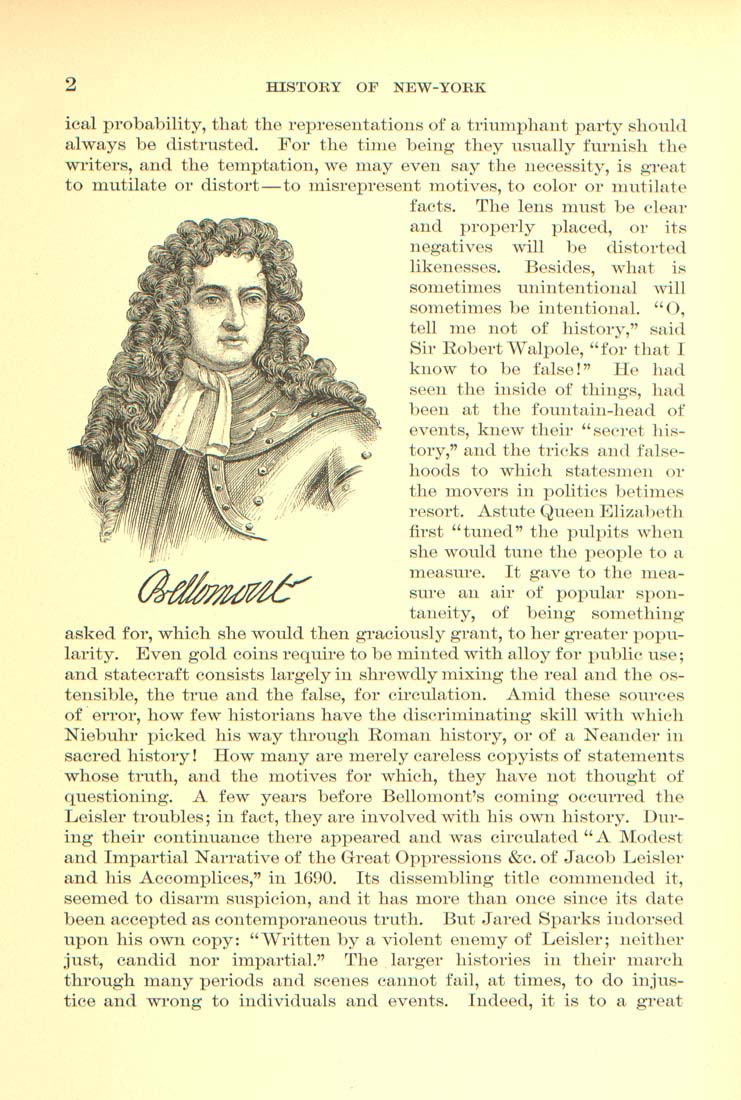HISTORY OF NEW-YORK
ical probability, that the representations of a triumphant party should
always be distrusted. For the time being they usually furnish the
writers, and the temptation, we may even say the necessity, is great
to mutilate or distort—to misrepresent motives, to color or mutilate
facts. The lens must be clear
and properly placed, or its
negatives will be distorted
likenesses. Besides, what is
sometimes unintentional will
sometimes be intentional. ^^O,
tell me not of history," said
Sir Robert Walpole, "for that I
know to be false!" He had
seen the inside of things, had
been at the fountain-head of
events, knew their "secret his¬
tory," and the tricks and false¬
hoods to which statesmen or
the movers in politics betimes
resort. Astute Queen Elizabeth
first "tuned" the pulpits when
she would tune the people to a
measure. It gave to the mea¬
sure an air of popular spon¬
taneity, of being something
asked for, which she would then graciously grant, to her greater popu¬
larity. Even gold coins require to be minted with alloy for public use;
and statecraft consists largely in shrewdly mixing the real and the os¬
tensible, the true and the false, for circulation. Amid these sources
of error, how few historians have the discriminating skill with which
Niebuhr picked his way through Roman history, or of a Neander in
sacred history! How many are merely careless copyists of statements
whose truth, and the motives for which, they have not thought of
questioning. A few years before Bellomont's coming occurred the
Leisler troubles; in fact, they are involved with his own history. Dur¬
ing their continuance there appeared and was circulated "A Modest
and Impartial Narrative of the Grreat Oppressions &c. of Jacob Leisler
and his Accomplices," in 1690. Its dissembling title commended it,
seemed to disarm suspicion, and it has more than once since its date
been accepted as contemporaneous truth. But Jared Sparks indorsed
upon his own copy: "Written by a violent enemy of Leisler; neither
just, candid nor impartial." The larger histories in their inarch
through many periods and scenes cannot fail, at times, to do injus¬
tice and wrong to individuals and events. Indeed, it is to a great
|








